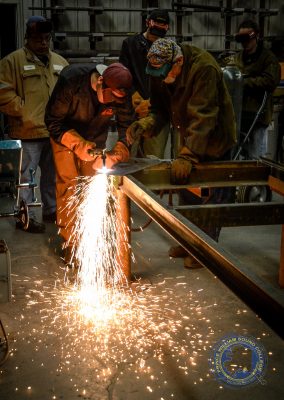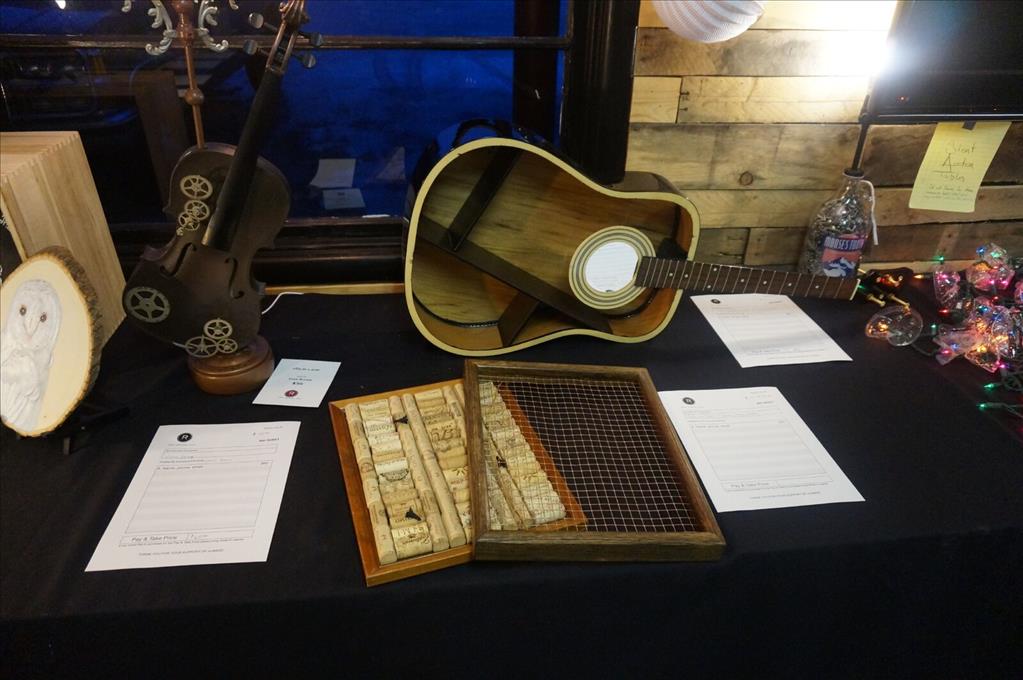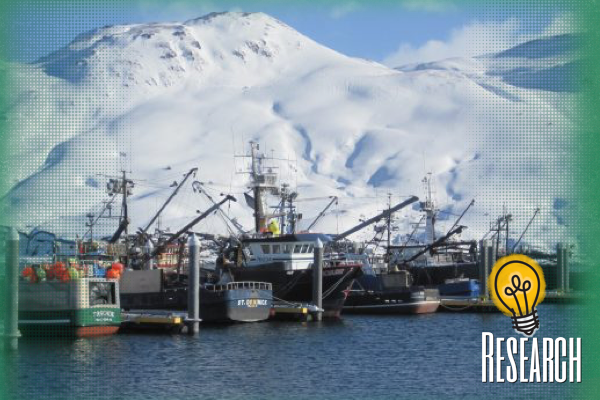Want to be a millwright? Training will soon be available, in Anchorage
by Tracy Kalytiak |
 Students learn one of many millwright skills in Dennis Eastman's class last fall
at Prince William Sound College in Valdez. Millwright classes will soon be available
in Anchorage. (Photo (and videos
Students learn one of many millwright skills in Dennis Eastman's class last fall
at Prince William Sound College in Valdez. Millwright classes will soon be available
in Anchorage. (Photo (and videos) courtesy of PWSC)
The word "millwright" conjures the thought of someone from an antique age - a leather-aproned, mustached man in a sepia photograph, sweaty, amid the dusty belts, gears and wheels of a machine shop.
The reality, now, in Alaska, is that a millwright is a person with a sophisticated range of skills who can find work in just about any of the state's industrial sectors - including mining, oil and gas, seafood processing, power and energy, water and wastewater. Freshly minted millwrights can command a starting salary between $70,000-$120,000.
Why would companies pay that kind of coin to a person who fixes, maintains and moves industrial machinery?
They pay because millwrights know, for example, that gearboxes and turbines and hydraulic pumping and piping must be laid on a center line, with everything square and plumb. If they're not, anything can happen: a small pump aligned improperly might draw more power so it doesn't operate as efficiently and wastes money.
But a barely-off alignment of a 750-megawatt rotor weighing hundreds of tons and rotating at 3,600 RPM, however, could touch off vibrations...and catastrophe.
"They would fly apart and cause extreme damage," said Dennis Eastman, instructor for the millwright-training program at UAA's Prince William Sound College campus in Valdez, which offers occupational endorsements and the opportunity to earn an Associate of Applied Science degree in industrial technology, with a millwright emphasis. That millwright-education program is currently the only one in the state, but it soon will begin offering students the opportunity to take millwright classes in Anchorage.
Eastman, a Minnesota native who grew up around mines and trained as a machinist before delving into a long career as a millwright, says proper training and certification of millwrights is critical.
"It's because of the technology involved and the responsibility of it," said Eastman, who's in his fifth year of teaching millwright classes in Valdez. "We're the precision maintenance mechanics. We deal in thousandths of an inch instead of sixteenths. It isn't something everybody can do."
The pay depends on what a millwright is assigned to do: "A full-time journeyman millwright can make $90,000, starting, and be at $120,000 within a year at the mining and petrochemical industries," Eastman said.
Eastman is one of those in the millwright profession who retired, growing the need to replenish the ranks.
Who are the perfect candidates for that kind of work?
"You have to have an inquisitive mind," Eastman said. "The kid that wants to make the fastest snow machine, likes working on it, doing the problems on it - that's the kid that would make a good millwright."
Meeting an unmet need
The way the change in the millwright-education program is expected to work, said CTC Dean Denise Runge, is that the Prince William Sound College program will send faculty to UAA's Anchorage campus, which will offer at least the Millwright I and II classes next year.
"There is still an unmet need for millwrights in the state of Alaska, and some students are not able to move to Valdez to pursue the program," Runge said, "so offering it here, in the state's largest city, just makes sense."
Necessary equipment and materials issues have not yet been resolved, she said, "so that is why it isn't officially on the schedule yet. But we're working on it."
The Alaska Department of Labor and Workforce Development reports there are approximately 200 millwrights in Alaska.
Martha Peck, outreach and membership coordinator for the Alaska Process Industries Careers Consortium, says the number is actually larger, however, because many millwright positions are not actually called by that name.
"The skills are very transferable to industries other than mining," Peck said. "Any industry using automation and machines would need some form of a millwright, such as fish processing, petroleum, power and energy, water and wastewater, and so on. Also, anything run with robotics. It's a vast arena."
Peck says capacity in Valdez's millwright class is eight students, because of the hands-on nature of the class and the size of the instruction area.
Meticulous millwright training is critical - working around stationary equipment can be dangerous due to the weight of the equipment, confined spaces the millwright must work in, the likelihood of working around hazardous materials and the risk of getting fingers or clothing caught.
Millwright mechanics are specialized in their skill set due to the technical nature of the equipment they maintain and repair.
They must be able to:
- Maintain and troubleshoot pneumatic equipment and hydraulic systems and equipment.
- Repair gearboxes, laser and reverse alignments.
- Know advanced blueprint reading skills.
- Maintain and repair turbines.
- Install electrical motors.
- Do preventive and predictive maintenance.
- Conduct vibration analysis.
- Knowledgeably work with (or be able to repair) pumps, crushers, PLC equipment and valves.
- Know layout, alignment, precision tooling, specialty tooling, rigging, welding, and other highly technical duties that require advanced level training and education.
Students learn these skills using donated equipment the millwright program's advisory board helps acquire. Advisory board members represent or have close ties to Alaska mining companies, refineries and other industries, so they make plant tours possible - "It's important the students see what's out there," said Tern Technologies Inc.'s Marty Krueger-and help move students into industry jobs.
Why is a university-based program necessary?
"Education and training programs align with the demands of industry labor needs," Peck said.
Over the past decade, the demand increased as new mining projects, oil and gas and maritime industries workforce increased.
"Not all Alaska employers are unionized, therefore the need for education and training programs [for] both non-union and unionized skilled labor," Peck said. "A university program offers the job seeker options with multiple employers."
'Experience is key'
Charlie Nixon first learned about PWSC's program from his father. "He works in the mining-oil fields industry selling pumps," Charlie said, "and when he told me about a technical school in Valdez, I thought since I like working with engines that I would be interested in the industrial mechanic side of things."
The most interesting things in the program for Charlie were the technology used in industrial mechanics.
"We would set couplings within a couple thousandths of an inch and had instruments to measure such small spaces," he said. "I also was amazed by the amount and quality of subjects we studied. All the way from blueprint reading to torch welding and everything in between."
The biggest challenge he experienced?
"Understanding that on paper, things were simple; but in reality, metal expands with heat, parts are designed wrong, welds are never perfect, and that experience is key to knowing how to deal with these variables," Charlie said. "I think a teacher who has experience also has a lot to do with the program. Our instructor, Mr. Eastman, knew how these skills would transfer into real life and spent time explaining certain things he knew were more difficult."
Charlie completed the millwright program and took more classes to complete his associate degree - "to give me a leg up in the job field," he said.
"I also learned that the more certificates you have, the better off you are at being a competitor in the job field," he continued. "Once you complete the millwright program, you can keep going as far as degrees."
Charlie says his friend has a millwright certificate and oil spill response training, so he can go more into the safety side of the industry.
"I myself am more interested in the way plants are run, and I can go into the set-up, maintenance or machining side of the industry," he said. "As far as where the jobs are, you could work in the oil fields, mineral and gold mines, power plants, and anywhere that uses working machinery."
Written by Tracy Kalytiak, University of Alaska Anchorage
 "Want to be a millwright? Training will soon be available, in Anchorage" is licensed under a Creative Commons Attribution-NonCommercial 4.0 International License.
"Want to be a millwright? Training will soon be available, in Anchorage" is licensed under a Creative Commons Attribution-NonCommercial 4.0 International License.














